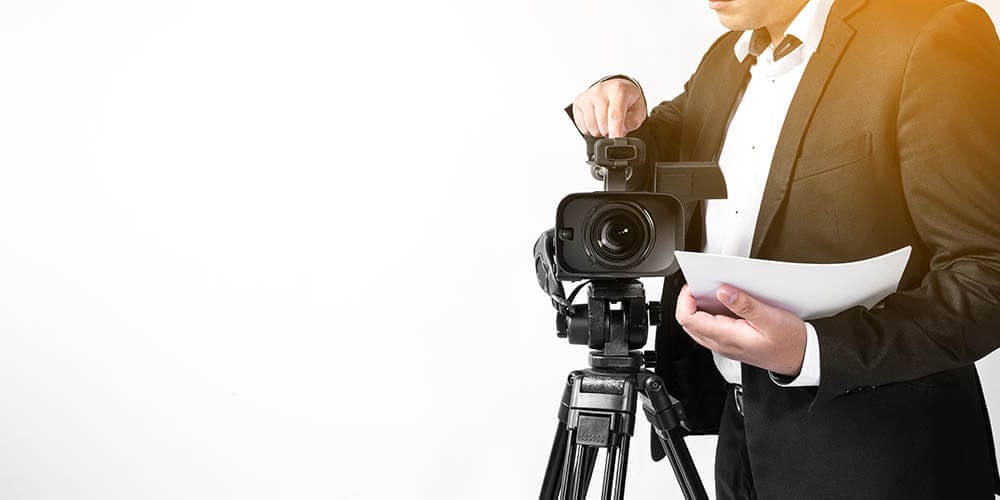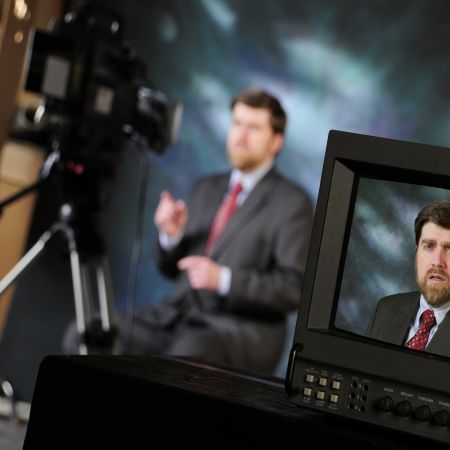Looking Into the Systems of Lawful Videography: Introduction Its Procedure in Shielding Authentic Visual Statement for Judicial Process
In the realm of judicial proceedings, the role of lawful videography stands as a cornerstone in maintaining and offering aesthetic proof. As modern technology continues to advance, the mechanisms behind lawful videography have ended up being increasingly intricate, using an important layer of authenticity to testimonies recorded on video clip. By delving into the functional ins and outs of legal videography, one can reveal the thorough processes that safeguard the honesty of aesthetic evidence offered in courts - Legal Videography. This exploration not just sheds light on the historic development of legal videography yet additionally hints at the future fads that might even more revolutionize just how visual testimonies are promoted in the realm of justice.
Historical Development of Lawful Videography
Taking a look at the historical development of lawful videography reveals a considerable makeover in the recording and presentation of visual evidence within the lawful landscape. In the past, lawful procedures heavily relied upon composed transcripts and photos to document occasions and provide evidence. With the development of video clip modern technology, the legal industry saw a standard change in just how aesthetic testament was recorded and presented.
The evolution of legal videography can be traced back to the late 20th century when improvements in video clip recording devices made it a lot more obtainable for usage in court rooms. This technological advancement not only enhanced the accuracy and reliability of visual evidence but also revolutionized the way cases existed to courts and courts (Legal Videography). Lawyers began to acknowledge the convincing power of video recordings in sharing emotions, nuances, and non-verbal cues that created pictures or transcripts alone can not catch efficiently

Technology Developments in Video Documentation
What essential technological developments have transformed video documentation in the legal area? The lawful area has seen considerable developments in video documentation modern technology that have actually boosted the credibility and integrity of aesthetic evidence in judicial proceedings. One of the vital innovations is high-def (HD) video recording capabilities, which offer crystal-clear images and sharp information that are vital for properly capturing statements, faces, and other visual hints. Additionally, the integration of timestamping and metadata functions in video paperwork tools has actually allowed exact documents of when and where the video was taped, guaranteeing the honesty of the proof offered in court.
Moreover, innovations in video security and watermarking technologies have actually bolstered the protection and tamper-proof nature of video evidence, guarding it against unauthorized changes or tampering. Moreover, the advent of cloud storage remedies and remote access capacities has structured the storage space, access, and sharing of video clip evidence, assisting in seamless partnership amongst lawyers and making certain efficient access to important aesthetic testimonies when needed. These technical innovations in video clip documentation have actually unquestionably reinvented the lawful area, improving the accuracy, reputation, and admissibility of aesthetic proof in judicial procedures.
Function of Legal Videographers in Court Settings
The development of video documentation modern technology in the lawful field has demanded a crucial duty for legal videographers in courtroom setups, making sure the stability and reliability of aesthetic statements presented throughout judicial procedures. Legal videographers play a basic function in capturing and maintaining precise visual evidence that can be critical in lawsuit. Their responsibility encompasses establishing tools, taping proceedings, and generating top notch videos that properly reflect the occasions in the courtroom.
In addition, lawful videographers frequently work carefully with lawful groups to make certain that the video evidence aligns with the case's demands and can be successfully offered in court to sustain the legal disagreements being check that made. Overall, the duty of lawful videographers in courtroom setups is crucial in upholding the concepts of justice and making sure the openness of lawful process. Legal Videography.

Ensuring Admissibility and Honesty of Video Evidence
To preserve the credibility of visual evidence offered in legal proceedings, making sure the admissibility and honesty of video evidence is an important responsibility for legal videographers. Admissibility refers to the approval of proof by the court, and for video clip proof to be permissible, it should satisfy particular standards. Legal videographers play an important function in making certain that the video clips they capture comply with the guidelines of evidence, such as dependability, authenticity, and significance.
Stability of video evidence includes preserving the originality and accuracy of the video footage from the moment it is taped up until it is provided in court. This includes safely keeping the video files, documenting the chain of safekeeping, and stopping any type of tampering or alterations. Lawful videographers need to follow strict methods to ensure the stability of the video evidence and stop any kind of difficulties to its authenticity.
Future Trends in Legal Videography
Offered the raising reliance on technology in lawful proceedings, legal videographers are poised to welcome cutting-edge developments shaping the future of visual testament capture and discussion. One of the noticeable trends imminent is the integration of online truth (VR) and augmented truth (AR) technologies right into legal videography. These technologies have the potential to change how visual proof exists in courtrooms, enabling courts and judges to submerse themselves in the scene of the crime or occurrence.
Furthermore, the usage of artificial knowledge (AI) algorithms for video evaluation is expected to improve the process of evaluating and analyzing huge quantities of video clip footage. AI can aid in identifying essential minutes, anomalies, and patterns within videos, boosting the performance of legal investigations.

Verdict
In final thought, lawful videography has actually played an essential role in supplying genuine aesthetic evidence for judicial proceedings. Via technical improvements and the experience of lawful videographers, the stability and admissibility of video evidence are ensured in courtroom setups. As lawful videography proceeds to progress, it will certainly be important to copyright criteria that maintain the accuracy and reliability of aesthetic testament for the future of lawful process.
Taking a look at the historic progression of lawful videography reveals a substantial improvement in the catching and discussion of aesthetic evidence within the lawful landscape.The development of video clip paperwork modern technology in the legal field has actually required a critical duty for lawful videographers in court settings, making certain the integrity and dependability of visual statements presented throughout judicial process. Additionally, lawful videographers usually function closely with legal teams to make certain that the video evidence straightens with the situation's demands and can be efficiently offered in court to sustain the lawful debates being made.To preserve the integrity of visual proof provided in lawful procedures, ensuring the admissibility and integrity of video proof is an important responsibility for lawful videographers. As legal videography continues to develop, it will be important to promote requirements that maintain the accuracy and dependability click this site of aesthetic testimony for the future of lawful process.